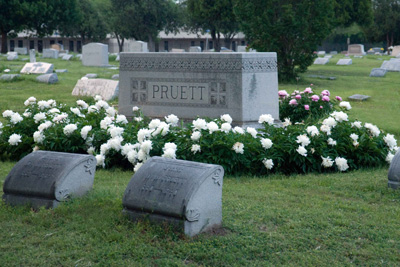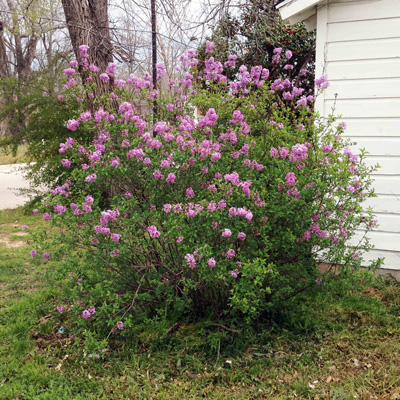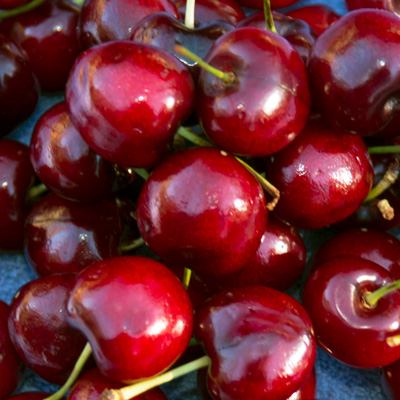Will These Plants Grow Here?
“I’m new to Texas, and there are plants I see, but I don’t see them in your books and I don’t hear you recommending them. Will these grow here? I’d appreciate your comments on them.”
Green Giant arborvitae. I don’t hear rave reviews from people who have tried this plant, and it did not fare at all well in the heat in my own landscape. Mine started struggling by mid-June and was gone by mid-July. Pyramidal hollies are better choices in almost all cases.

Peonies. I grew up in College Station, and my mom and dad (from Nebraska) commented how they missed their peonies. I’ve lived in the DFW area for the past 49 years, and I’ve observed that I-30 is just about the dividing line of where you can even grow peonies at all. There are a few heirloom varieties you see in older neighborhoods that bloom many springs. However, their flowers are huge and susceptible to late March and April rain and windstorms. South of that line I can’t recommend them, and north of that line, I’d suggest planting only a few.
Raspberries. The only one I’ve ever seen grow well in hot Texas is a red variety called Dorman Red that originated in Mississippi. It grows well, and it fruits reliably. However, it really lacks flavor. I’d score it about a 1 or 2. I have other things I’d much rather grow.
Rhubarb. You see it sold, but have you ever seen it being harvested here in Texas? I haven’t. We’re just too hot. Maybe the Panhandle can grow it, and maybe the Davis Mountains, but not for the rest of us.

Lilacs. Let me reach for the hardhat and armor. People become bitter with my comments. I do not think Texans should spend time, money and space on lilacs. I’ve lived where they thrive. Their flowerheads are supposed to be as big as basketballs. What we are able to turn out in Texas are the size of tennis balls. And the plants struggle just to make it through our summers, let alone grow. According to the veterans who worked there, a plant at the TAMU Center on Coit Road in North Dallas where I worked for five years was actually shorter in 1977 than it had been 25 years earlier. Try them if you wish, but don’t boast about them in front of people from Iowa, Illinois or Washington State. They know what real lilacs are supposed to look like. Except for the sweet aroma of lilacs, purple crape myrtles are a lot more spectacular here.
Yews. Taxus – true Japanese yews from the North. These are stellar plants in the Midwest and along the Upper East Coast, but they succumb to our heat. They’ll do fairly well in Northeast Texas, and you do see them in DFW and even farther south. But they’re expensive and not ultra-dependable. Try a few to see how they do before you invest the big bucks.
Sky Pencil hollies. This is a selection of Japanese holly (Ilex crenata). As such, it’s poorly adapted to alkaline soils but better suited to East Texas. It’s heavily marketed in the big cities along I-35, but it’s poorly adapted to the black clay gumbo soils there. A better alternative is the less available Scarlet’s Peak yaupon holly.

Cherries. Most of Texas is too warm by about 15 degrees, summer and winter. Montmorency sour cherries have the best chance of succeeding, but even they will struggle in Texas.
Apricots. Bryan and Moorpark are the best candidates, but they have fairly low chilling requirements. That means that they will often come into bloom early, only to get caught by late frosts and freezes (like this week). You’ll get a good crop, on average, about one year out of four.
Canadian Green grass. This is marketed on television to fill in bare patches in lawns. So are several other blends. Be careful on two fronts. First, that the grasses included in the blends are adapted to Texas conditions of sun, temperature, humidity and rainfall. And second, be certain that none of the grass types in the blends is capable of becoming invasive. These blends are usually not good options. If your bare patches are due to excessive shade, that almost always means it’s time to shift to a shade-tolerant groundcover replacement.
So I’ve pointed out 10 plants that are likely to cause you frustration. These are compared to hundreds, if not thousands, that can be sources of happiness. Your local independent retail garden center will have the proper advice for your part of the state. Take advantage of that help, and seek their opinions by asking as you check out, “Is every plant in my wagon likely to succeed in my landscape and garden?”
